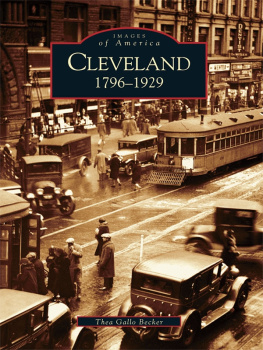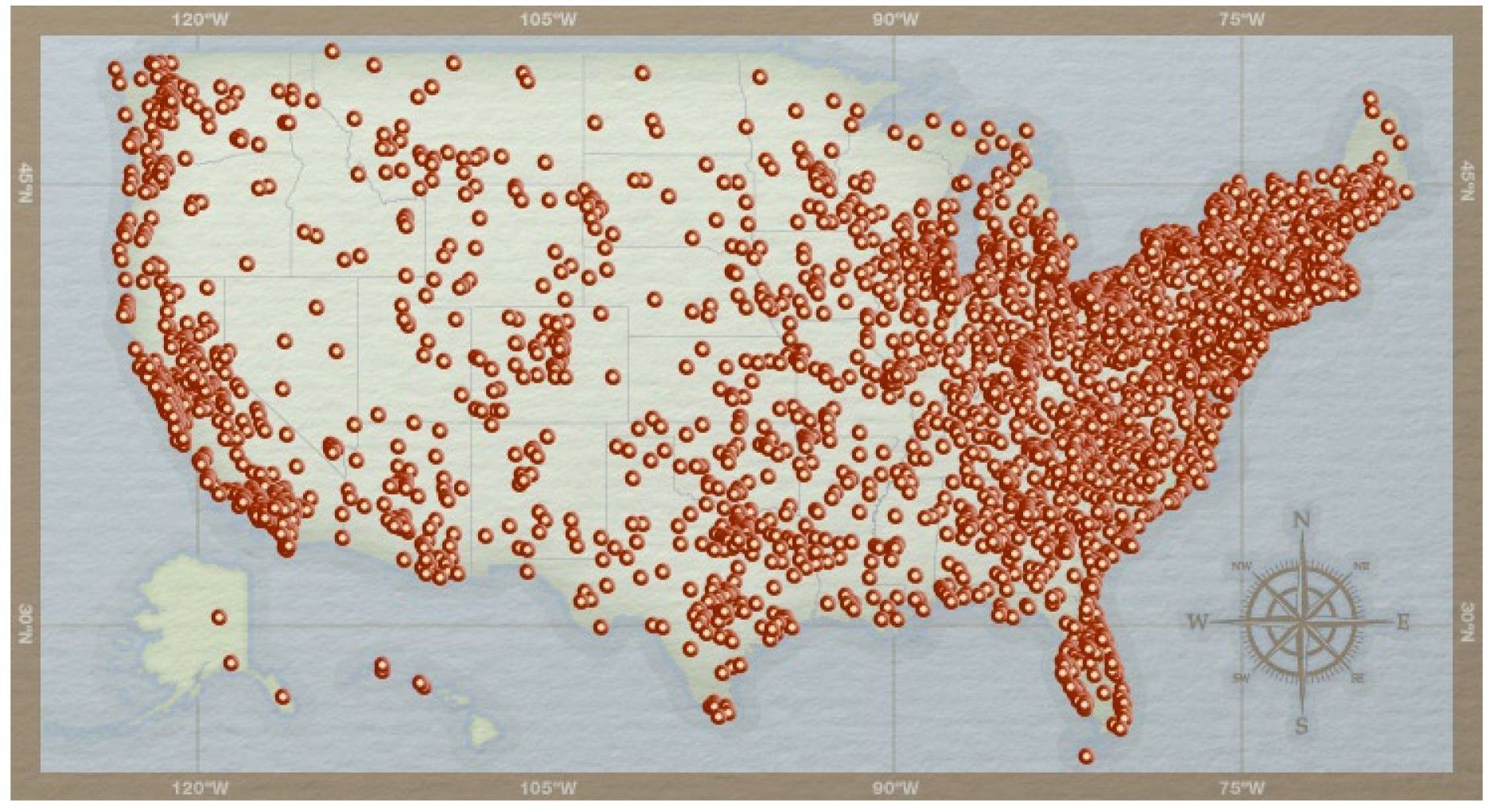Thank you to the following: William C. Barrow, Cleveland State University Library, Special Collections; Randolph S. Bergdorf, director, Peninsula Library and Historical Society; Craig Bobby; Dr. Judith G. Cettina, county archivist, Cuyahoga County; John B. Gregor; Michele Hiltzik, senior archivist, Rockefeller Archive Center; Sabine Kretzschmar, executive director, Shaker Heights Historical Society; Mary Kroehmer, Lake View Cemetery Association; Dr. Roy Larick; Steven Morchak; Kara Hamley ODonnell, historic preservation planner, city of Cleveland Heights; Donald Petit, Landmarks Commission, City of Cleveland; Dr. Kenneth Rose, assistant director, Rockefeller Archive Center; Tony Rupcic; Ann Sindelar, reference supervisor, Western Reserve Historical Society; Thomas L. Vince, archivist and historian, Western Reserve Academy.
I wish to thank my editor, Melissa Basilone, for her advice, great enthusiasm, and interest in this book.
And finally I dedicate this book to the wonderful librarians and archivists who have helped me over many years explore the fascinating world of Clevelands history and the Rockefeller imprint on that citys history and landscape.
From 1985 to 1987, Sharon Gregor coordinated the effort that placed the 81 Rockefeller homes on the National Register of Historic Places, resulting in the dedication of the Forest Hill Historic District. A founder of the Forest Hill Historic Preservation Society, she served as its first president and in 1989 developed and led the first walking tour of historic sites associated with the Rockefeller Estate, now found in Forest Hill Park. She has given numerous presentations on Forest Hill and recently chaired the East Cleveland Historic Preservation Board. Gregor holds a masters degree in urban studies from the Levin College of Urban Affairs, Cleveland State University.
BIBLIOGRAPHY
AIA Cleveland Chapter of the American Institute of Architects. Guide to Cleveland Architecture , second edition. Cleveland, OH: Carpenter Reserve Printing, Inc., 1997.
Chapman, Edmund H. Cleveland: Village to Metropolis . Cleveland, OH: The Western Reserve Historical Society, 1964.
Gieck, Jack. A Photo Album of Ohios Canal Era: 18251913 . Kent, OH: The Kent State University Press, 1992.
Gocher, W. H. Fasigs Tales of the Turf with Memoir . Hartford, CT: W. H. Gocher, 1903.
Goulder, Grace. John D. Rockefeller: The Cleveland Years . Cleveland, OH: Western Reserve Historical Society, 1972.
Gregor, Sharon E. Forest Hill: The Rockefeller Estate . Charleston, SC: Arcadia Publishing, 2006.
Herrick, Clay, Jr. Cleveland Landmarks . Cleveland, OH: Landmarks Publishing Company, 1986.
Johannesen, Eric. Cleveland Architecture 18761976 . Cleveland, OH: Western Reserve Historical Society, 1979.
. From Town to Tower . Cleveland, OH: Western Reserve Historical Society, 1983.
Miller, Carol Poh, and Robert A. Wheeler. Cleveland: A Concise History, 17961996 , second edition. Cleveland, OH: Case Western Reserve University, 1990.
Nevins, Allan. Study in Power: John D. Rockefeller, Industrialist and Philanthropist , two volumes. New York: Charles Scribners Sons, 1953.
Rockefeller, John D. Random Reminiscences of Men and Events , Tarrytown, NY: Sleepy Hollow Press, 1984.
Rose, Kenneth W. Why Chicago and Not Cleveland? The Religious Imperative Behind John D. Rockefellers Early Philanthropy, 18551900 , Proceedings of the Case Western Reserve University American Studies Program Tenth Annual Western Reserve Studies Symposium. Cleveland: OH, Case Western Reserve University, 1995.
Rose, William Ganson. Cleveland: The Making of a City . Cleveland, OH: The World Publishing Company, 1950.
Stapleton, Darwin H. The City Industrious: How Technology Transformed Cleveland, in The Birth of Modern Cleveland, 18651930 , edited by Thomas F. Campbell and Edward M. Miggins. Cleveland, OH: Western Reserve Historical Society, 1988.
Van Tassel, David D. and John J. Grabowski, eds . The Encyclopedia of Cleveland . Bloomington, IN: Indiana University Press, 1987.
Find more books like this at
www.imagesofamerica.com
Search for your hometown history, your old
stomping grounds, and even your favorite sports team.
One
THE INDUSTRIAL CITY
The story of Clevelands ascent to industrial and manufacturing prominence in the 20th century has often been told, and within that story, nothing has captured the imagination more than the meteoric rise of the Standard Oil Company, its beginning in Cleveland, and its founder John D. Rockefeller. Of all the sites associated with this story that can be found in the city today, perhaps the most important is Merwin Street in the flats. Here were the docks that Rockefeller scoured looking for a job in 1855 and where he found employment at the age of 15 as a bookkeeper in the commission house of Hewett and Tuttle. Here on Merwin Street in 1865, Rockefeller and Samuel Andrews also located the office of the Excelsior Oil Works in the Sextons Block.
While most of the structural landmarks have long since disappeared in this historic area, the terrain, rail lines, river, and imprint of the streets are still easily discernible. The neck of land, crossed by Columbus Road and surrounded by the Cuyahoga River, was a teeming area of commerce crowded with lumberyards, commission and forwarding houses, grain elevators, warehouses, light industry, and the roundhouse of the Cleveland, Columbus and Cincinnati Railroad. Here the Ohio and Erie Canal cut across the neck between James and West Streets not far from todays Center Street bridge and the Flat Iron Caf, and here the canal reached its northern terminus and canal basin at mile zero. This was Clevelands first central business district aptly described on an 1853 map as Gravity Place.
Rockefeller wrote of Hewett and Tuttle, The firm conducted a business with so many ramifications that the education was quite extensive. They owned dwelling houses, warehouses and buildings which were rented for offices and a variety of uses, and I had to collect the rents. They shipped by rail, canal and lake. There were many different kinds of negotiations and transactions going on, and with all these I was in close touch. Rockefeller credited what came after to what he learned on Merwin Street.
NORTH SIDE EUCLID AVE. The building in the middle with the arched entrance is the Arcade. Two buildings to the west is the Standard Block, headquarters of the Standard Oil Company. The six-story business block, built in 1873, was designed by architect Walter Blythe. Merchants shops were on the ground floor and offices above. On the far right is the Nottingham Block, which was the Halle Brothers Company store until it moved to East Twelfth Street in 1911.
STANDARD OIL WORKS. Refinery No. 1, formerly the Excelsior Oil Works, straddles the banks of Kingsbury Run where it emptied into the Cuyahoga River. The process of refining was one of distilling crude oil into kerosene for lighting and illumination. Initially gasoline was a by-product and discarded. Across the Cuyahoga River valley on the Heights can be seen Tremont.













